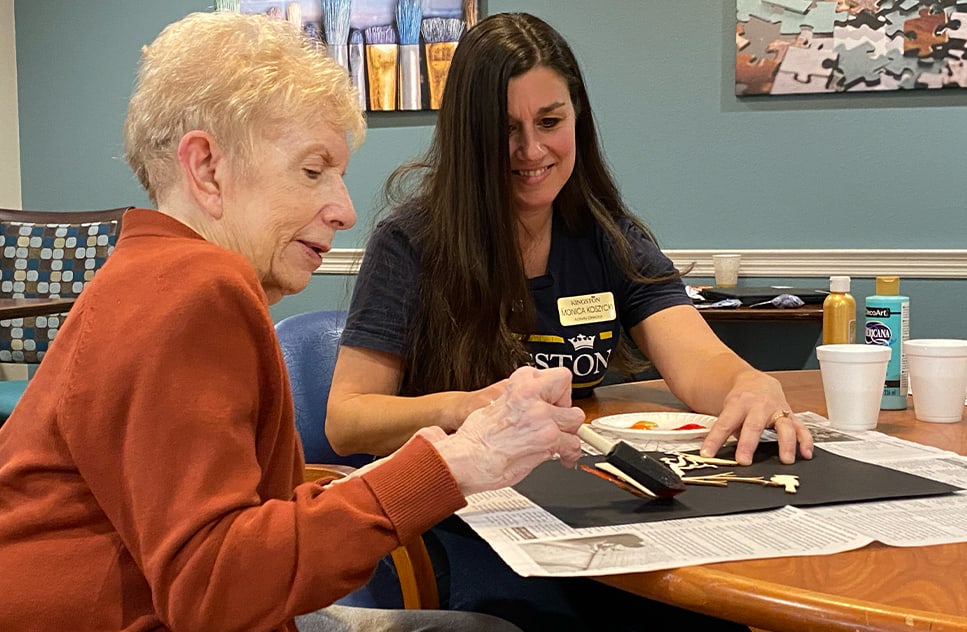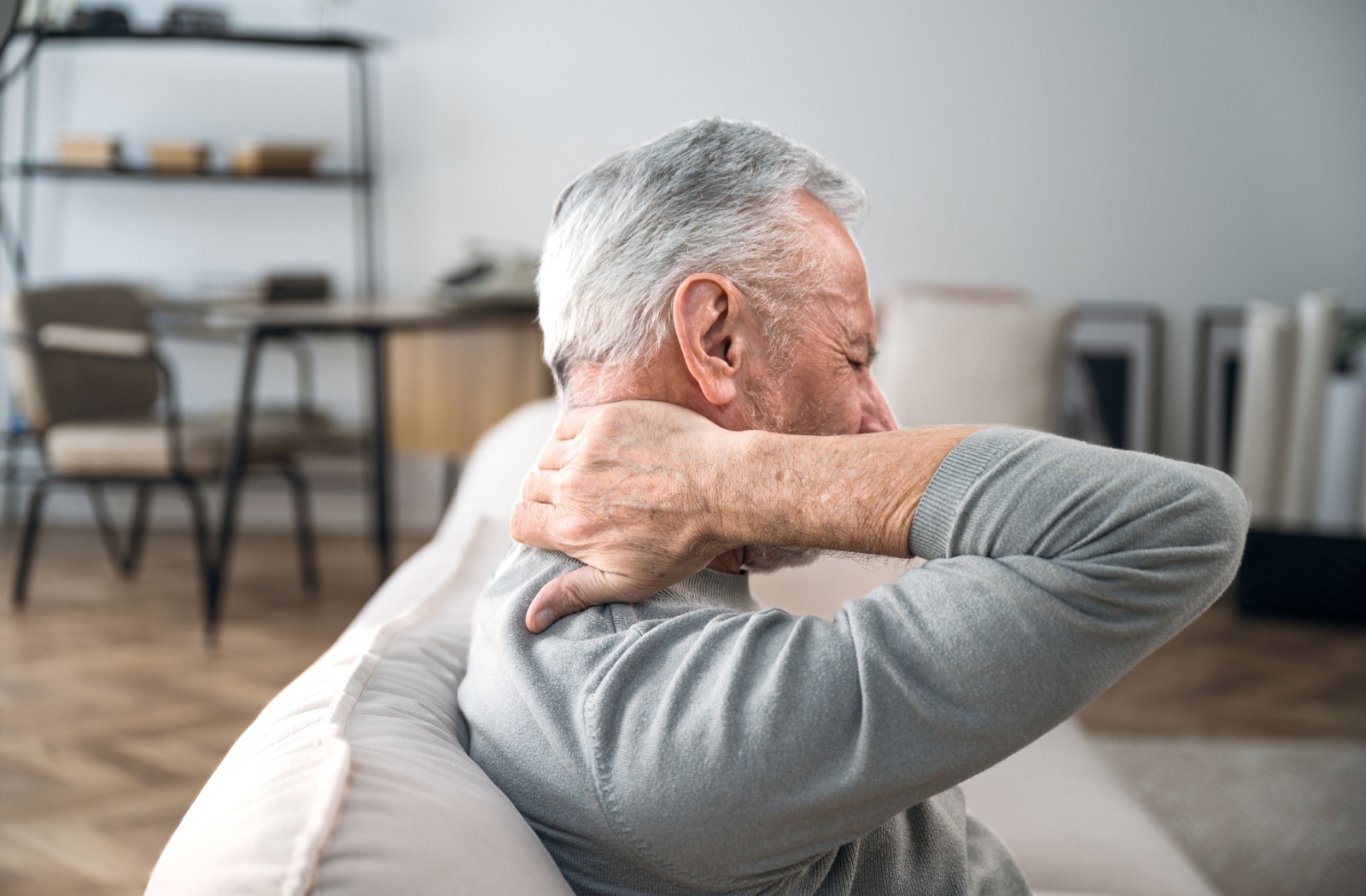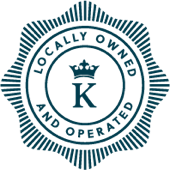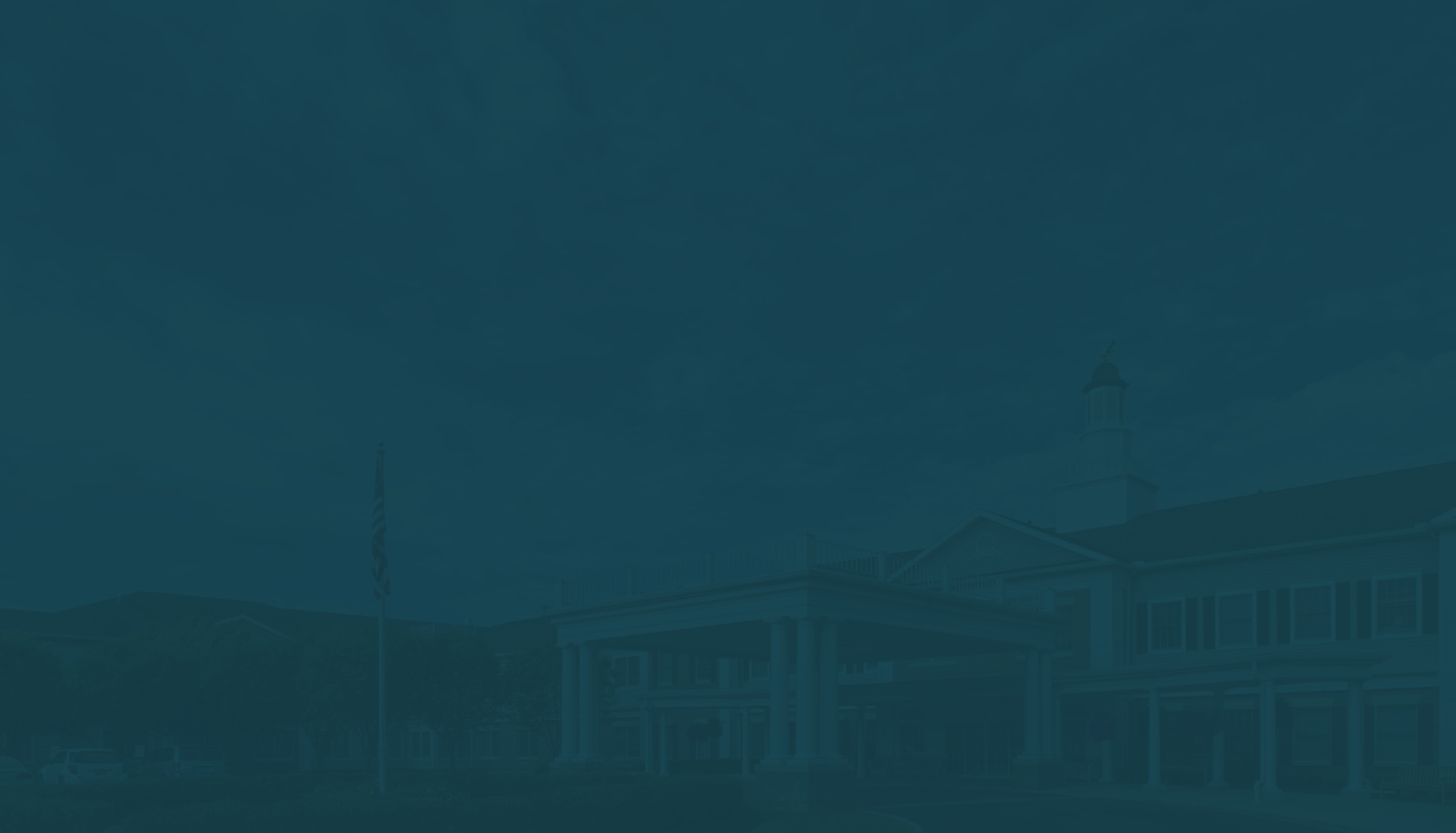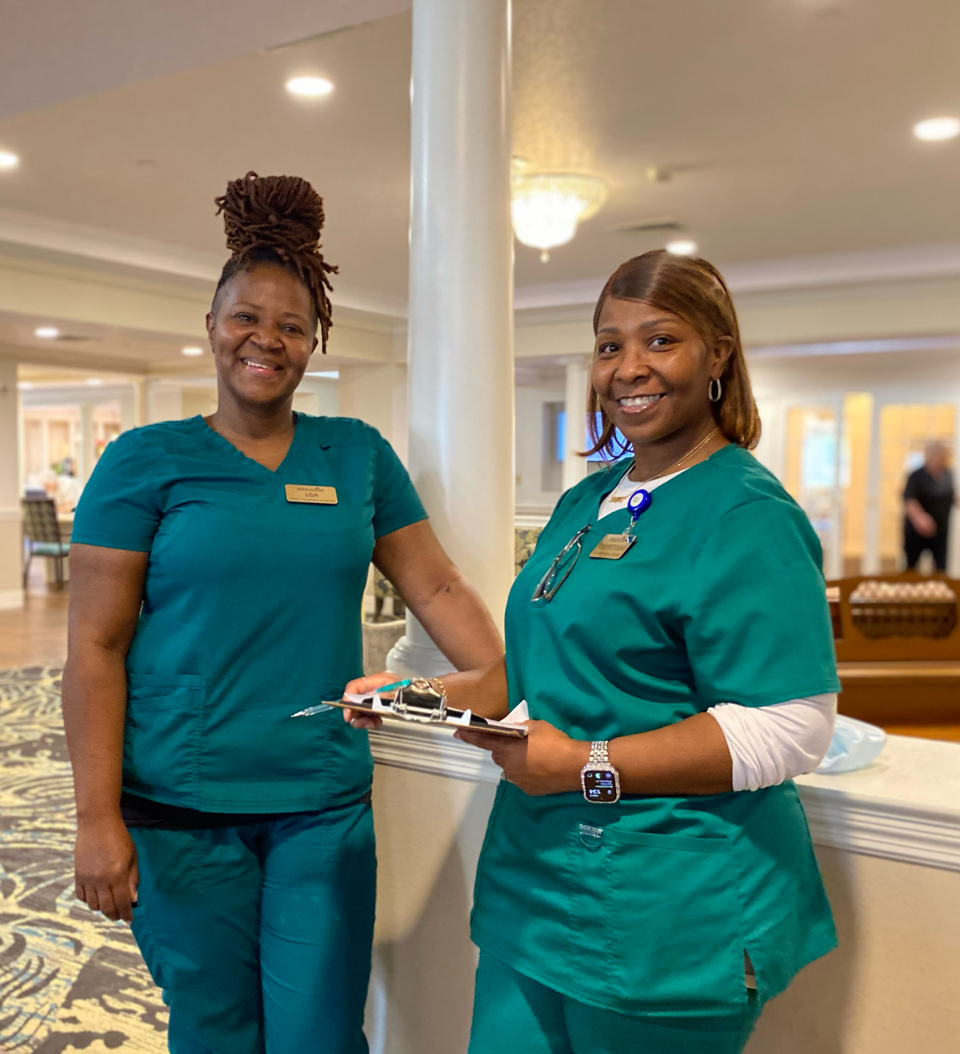As we age, physical changes happen. Most changes we feel are entirely natural, but sometimes, they can be inconvenient. Some older adults notice stiffness, while others experience joint pain with certain movements.
While you can manage natural changes effectively with lifestyle modifications, like low-impact exercise, some of these changes can be startling. In some cases, a person may even require professional support due to their age-related changes.
Normal aches and pains of aging can include:
- Back pain and stiffness
- Muscle aches and soreness
- Joint pain and stiffness
- Foot pain and mobility issues
- Headaches and tiredness
- Arthritis-related discomfort
However, if you ever notice sharp pain, sudden swelling, or significant discomfort that won’t go away, don’t ignore it. These can sometimes be signs of underlying medical problems, and you should always seek professional help to address these concerns.
Back Pain & Stiffness
Back discomfort often comes from changes in posture, spinal wear, or other common conditions. More than 45% of older adults experience back pain at some point. Fortunately, low-impact exercises, posture changes, and gentle stretching can reduce this common problem.
First, try working gentle movements into your day. Even something as basic as a mid-morning stretch can reduce stiffness and keep you more flexible. It also helps to:
- Practice proper posture while sitting and standing to reduce strain on your back.
- Engage in low-impact activities like walking or swimming to strengthen back muscles.
- Explore alternative therapies such as acupuncture or massage to relieve tension.
These little steps can reduce age‑related stiffness and support joint pain relief.
Muscle Aches & Soreness
As we age, our muscles naturally lose mass and flexibility. These changes can quickly make us more prone to soreness.
Older adults can experience these changes because of inactivity, poor posture, or certain medical conditions. While this is a normal part of aging, it doesn’t mean you have to live with discomfort.
Every day, try slow stretching like shoulder rolls or seated leg stretches. Topical creams (menthol or capsaicin) can offer momentary ease, and light physical therapy or guided home exercises can gently rebuild muscular flexibility.
Joint Pain & Stiffness
Joint pain is a frequent issue for older adults due to the natural breakdown of cartilage, which reduces cushioning in the joints. The breakdown is especially common in weight-bearing areas like the knees, hips, and spine.
Conditions like osteoarthritis or rheumatoid arthritis can worsen joint stiffness and discomfort.
If you regularly deal with joint-related discomfort, it helps to:
- Use heat pads regularly to loosen the affected area
- Stay active with gentle, low-impact movements
- Try water-based therapy to reduce weight on your joints
These steps make moving much easier while they protect your joints.
Foot Pain & Mobility Issues
Foot discomfort can come from arthritis, weak arches, or simply wearing shoes that don’t fit well. With care, you can keep moving comfortably.
To reduce foot pain, try these approaches:
- Wear supportive shoes with proper arch support and cushioning
- Stretch your feet and calves regularly to improve flexibility
- Use orthotic inserts to correct imbalances and provide extra support
- Treat yourself to regular foot massages to relieve tension
Taking care of your feet can help you stay active and enjoy your daily routine. Practicing balance exercises can also help take the pressure off your feet, so your whole body can work together harmoniously to keep you mobile.
Headaches & Tiredness
Headaches can become more frequent with age due to dehydration, stress, poor sleep, or skipped meals. While they’re often manageable, they can still disrupt your day.
To prevent and manage headaches, follow these tips:
- Stay hydrated by drinking plenty of water and enjoying watery foods throughout the day
- Practice relaxation techniques like deep breathing or meditation to reduce stress
- Use over-the-counter pain relief sparingly and consult your doctor if headaches persist
However, if you notice significant headaches, don’t ignore them. These can be a sign of serious underlying conditions, so don’t ignore frequent or severe migraines.

Arthritis-Related Discomfort
When joint stiffness, swelling, or lingering pain starts to impact daily life, arthritis may be a factor. It’s common and manageable with thoughtful care.
Focus on gentle, low‑impact exercises that keep joints moving, like water classes or light yoga. Heat and cold therapies can offer soothing comfort, and some supplements may help, after checking in with your doctor. Physical therapy can also help ease pain and support mobility.
What Aches & Pains Are Unusual with Age?
While people can expect some aches with age, some signs suggest it’s time to check in with a healthcare provider. If you’re noticing any of these concerns, it’s wise to discuss them:
- Severe or sudden joint redness and swelling
- Numbness, tingling, or weakness in arms or legs
- Pain that rapidly worsens or doesn’t improve with rest
- Persistent headaches that affect vision or balance
- Discomfort that persists and interferes with daily life
If these symptoms sound familiar, reach out to a medical professional for guidance. They can perform a thorough checkup and determine the cause of your symptoms.
Making an Active Lifestyle Easier Than Ever
Living well with age means being kind to your body through gentle movement, good posture, and restful self-care. These simple practices help relieve aches and pains and support everyday comfort. It’s what you deserve.
Here at Kingston Residence of Sylvania, we believe aging well means staying active and supported. Our caring team is ready to help you explore ways to keep feeling strong and comfortable. Schedule a visit with us today to learn more about how we can support you!
